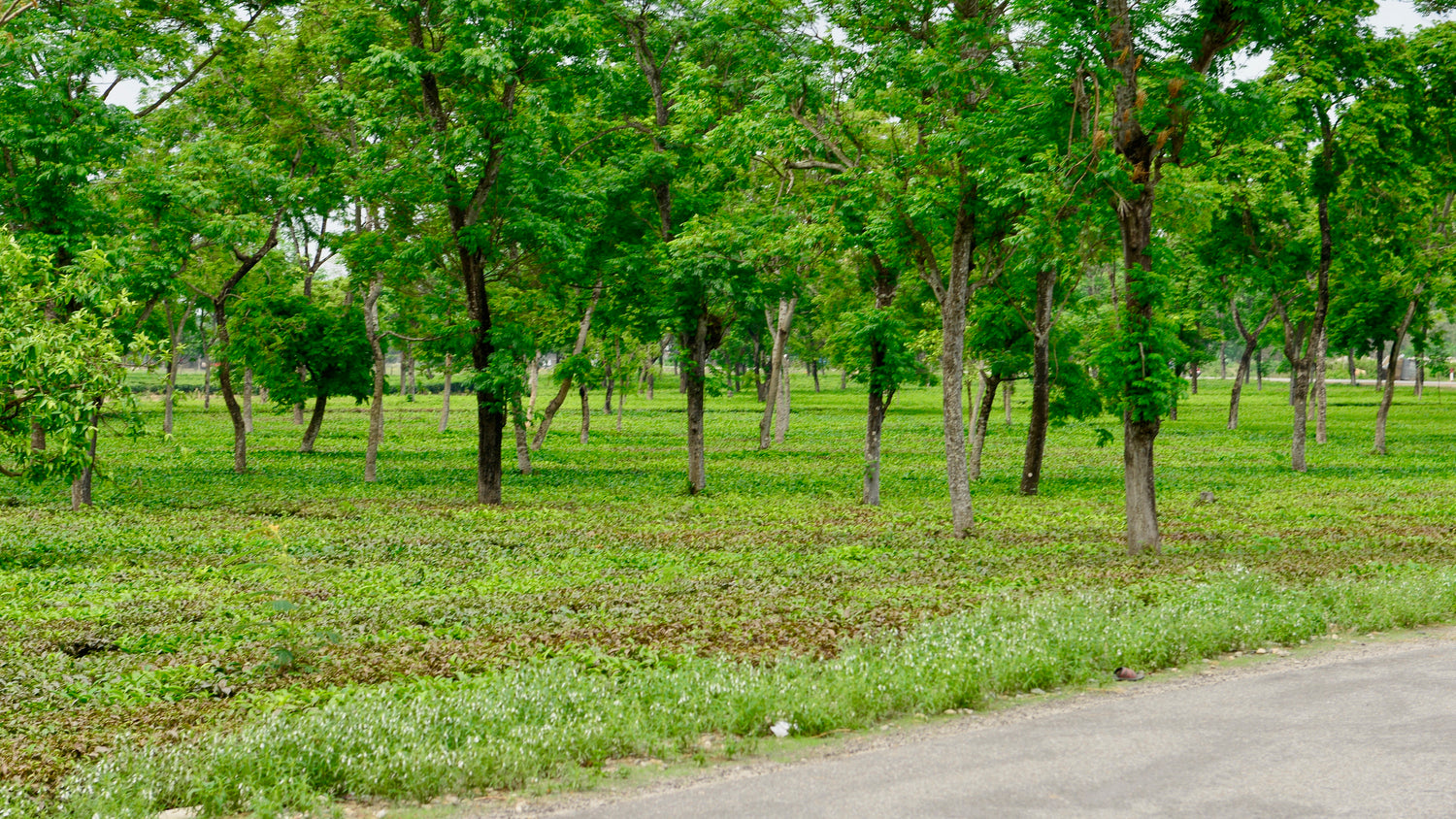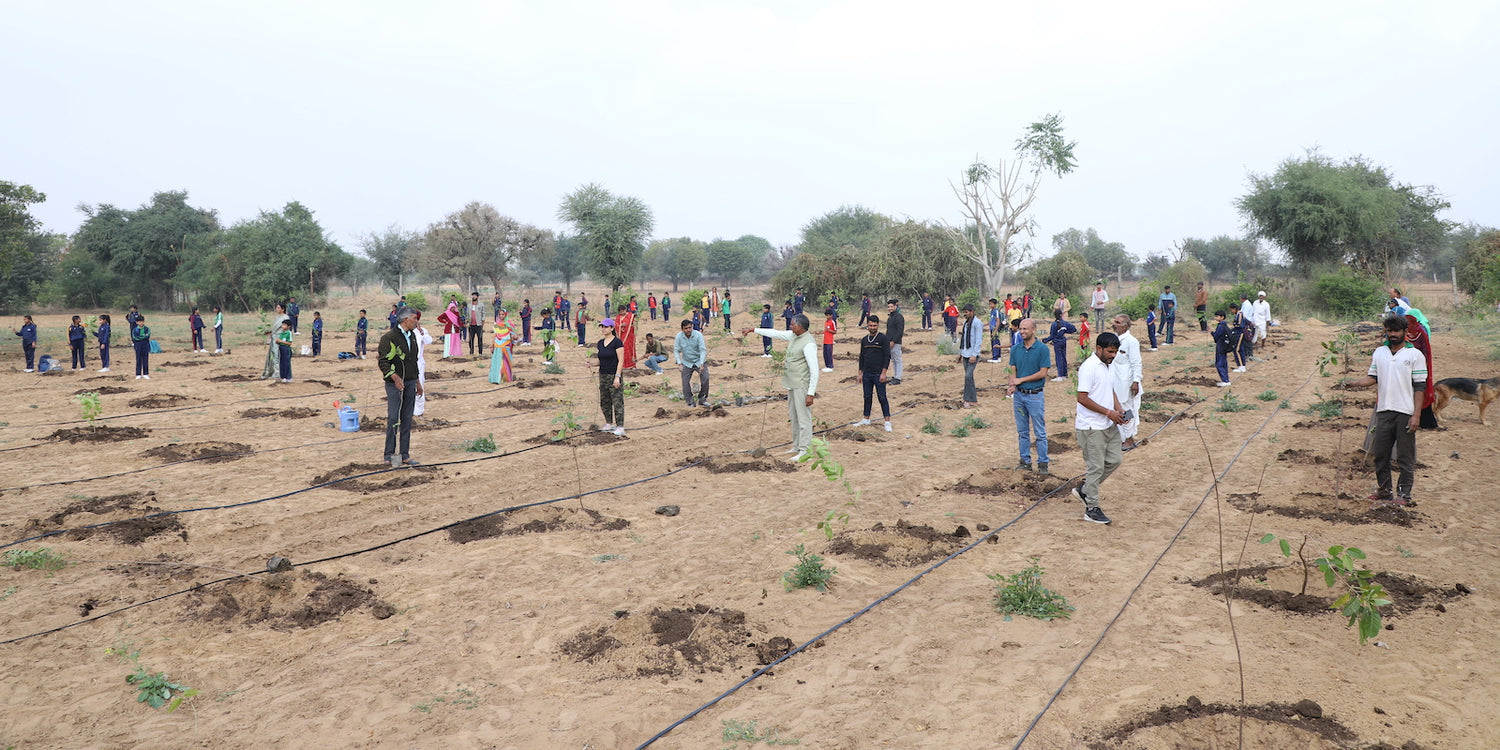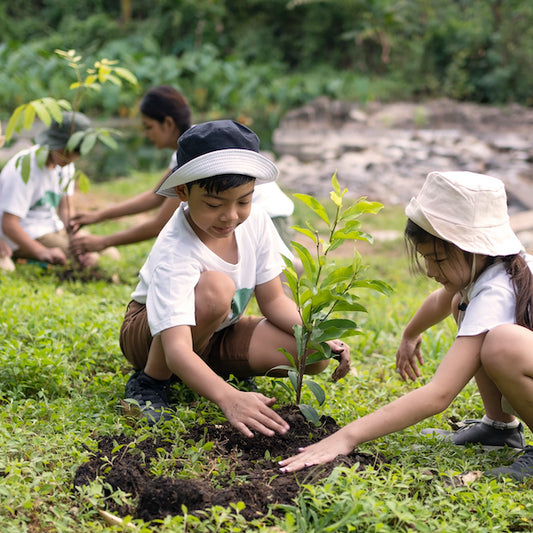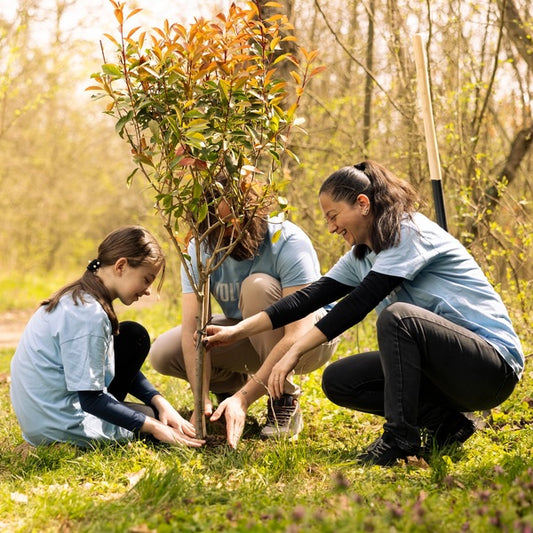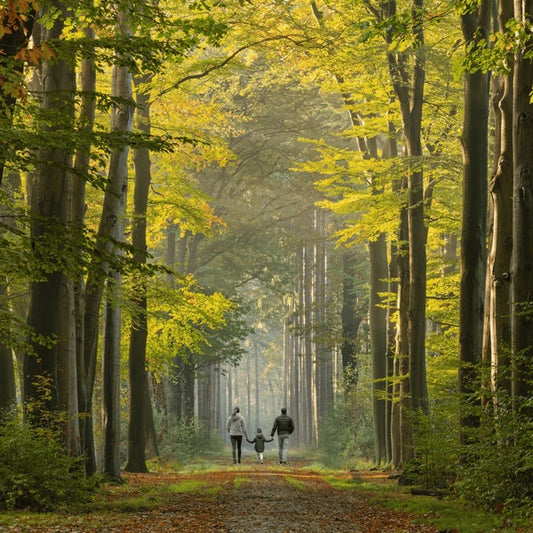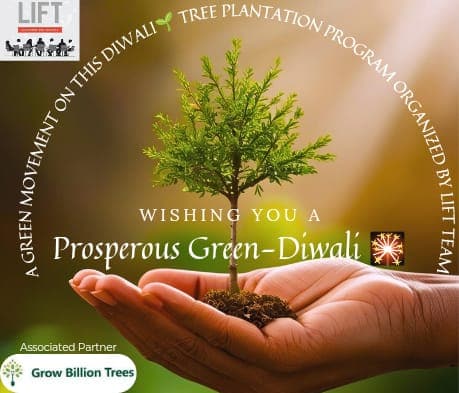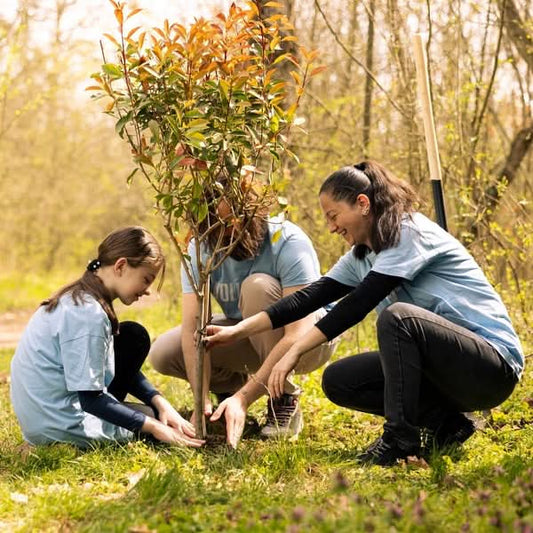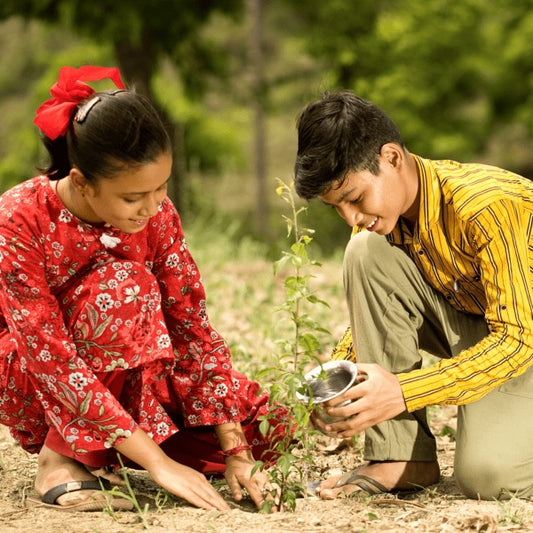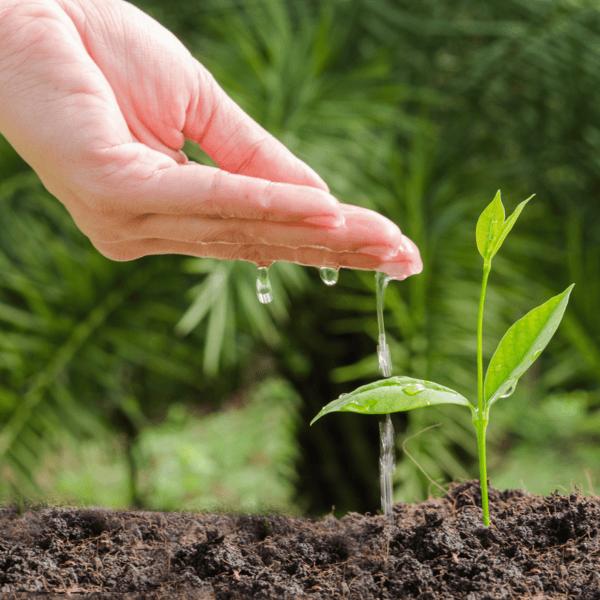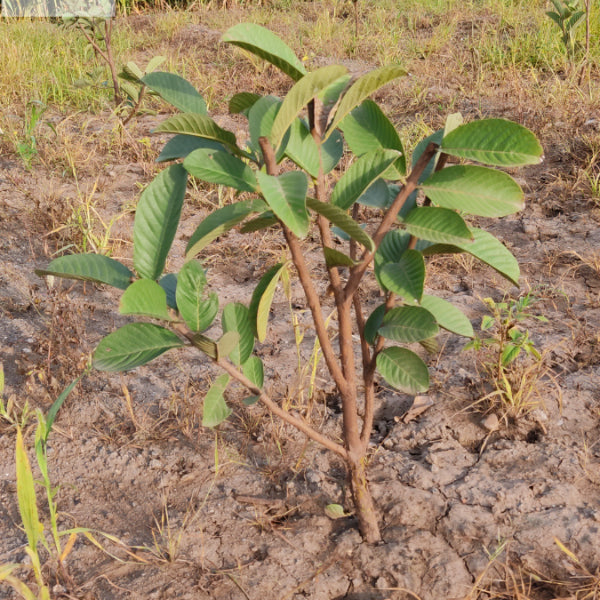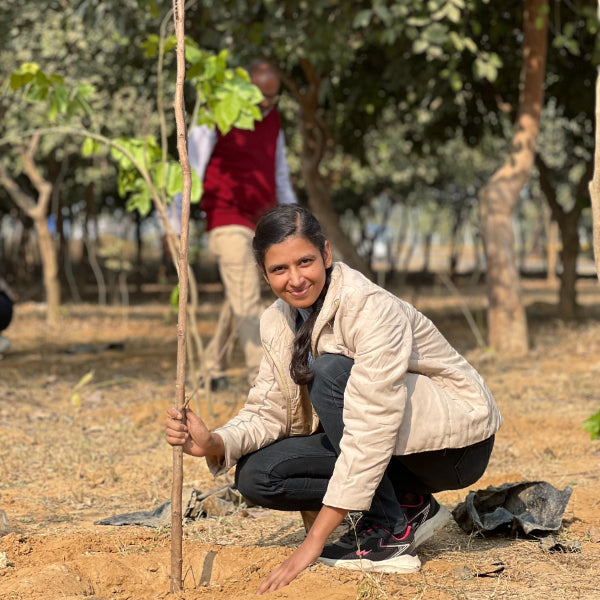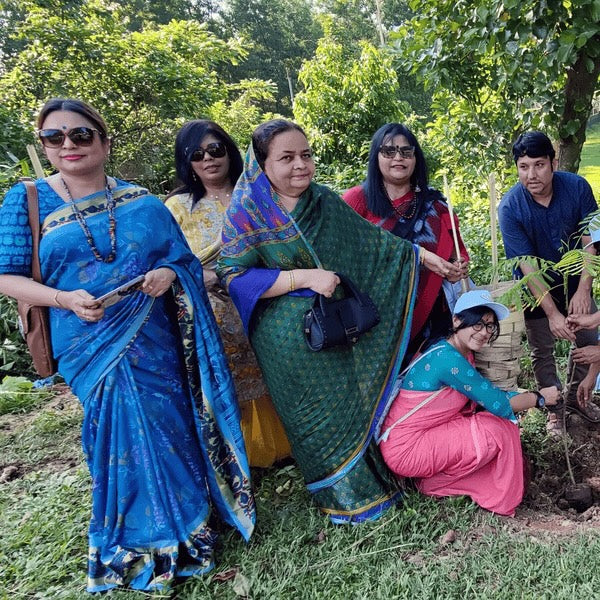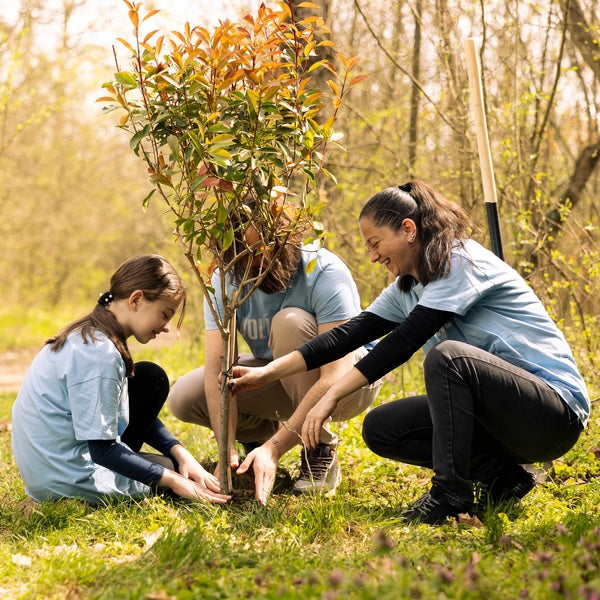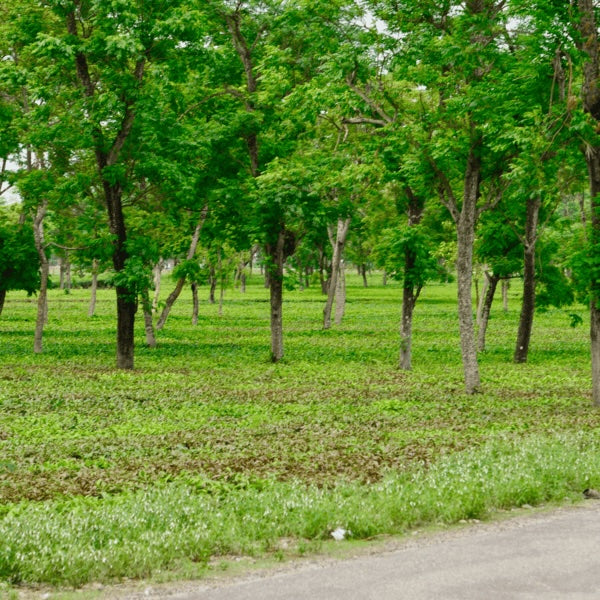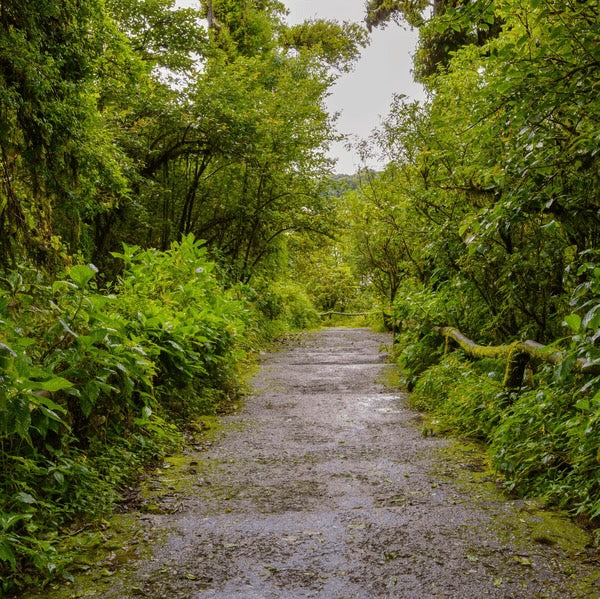Agroforestry in West Bengal: Mangroves and More
Agroforestry is a sustainable land-use system that integrates trees and shrubs with crops and livestock. In West Bengal, this practice is gaining mome Read more
Connect with us
-
👥 Corporates
If you are looking for:
- 🌲 Tree Plantation Events
- 📊 CSR Projects
📧 corporate@growbilliontrees.com
📞 +91 9699723523
💬 +91 9325931304 WhatsApp (Only)
🕒 Mon - Sat | 10am - 7pm IST
-
🧩 Tree Plantation NGOs
If you are looking for:
- 💰 Financial Assistance
- 🤝 Operational Support
📧 support@growbilliontrees.com
📞 +91 9699723523
💬 +91 9325931304 WhatsApp (Only)
🕒 Mon - Sat | 10am - 7pm IST
-
🌼 Individuals
If you are looking for:
- 👥 Group Tree Plantation Drive
- 🌳 Bulk Tree Plantation
📞 +91 9699723523
💬 +91 9325931304 WhatsApp (Only)
🕒 Mon - Sat | 10am - 7pm IST
Trending
Trees for Corporates
Agroforestry in West Bengal: Mangroves and More
Agroforestry is a sustainable land-use system that integrates trees and shrubs with crops and livestock. In West Bengal, this practice is gaining momentum, especially with the presence of mangroves along the Sundarbans. 🌳
The Sundarbans, a UNESCO World Heritage Site, is home to the largest mangrove forest in the world. These unique ecosystems play a crucial role in coastal protection, biodiversity, and carbon sequestration. 🌊
Mangroves are vital for the environment. They act as natural barriers against storm surges, reducing the impact of cyclones on coastal communities. In West Bengal, they protect millions of lives and livelihoods. 🌪️
Historically, the Sundarbans have been a source of livelihood for local communities. Fishermen, honey collectors, and farmers have thrived in this rich ecosystem for generations. However, climate change and deforestation threaten this delicate balance. ⚠️
Agroforestry can help restore and enhance these ecosystems. By integrating mangroves with agricultural practices, farmers can improve soil health, increase biodiversity, and boost their income. 🌱
Fun fact: Mangroves can store up to four times more carbon than terrestrial forests! This makes them essential in the fight against climate change. 🌍
In West Bengal, initiatives are underway to promote agroforestry. Local farmers are being trained to plant mangroves alongside traditional crops. This not only protects the coastline but also provides additional income through sustainable harvesting. 💰
One organization leading the charge is Grow Billion Trees. Their mission is to plant one billion trees across India, focusing on agroforestry and reforestation. 🌿
Grow Billion Trees collaborates with local communities, NGOs, and government bodies to implement projects that promote sustainable land use. They provide training, resources, and support to farmers interested in agroforestry. 🤝
Through their efforts, they aim to create a network of agroforestry practitioners who can share knowledge and best practices. This community-driven approach ensures that the benefits of agroforestry are widely distributed. 🌐
Moreover, Grow Billion Trees emphasizes the importance of native species in their planting initiatives. By using local varieties, they enhance biodiversity and resilience in the ecosystem. 🌼
Agroforestry also has economic benefits. Farmers can diversify their income by growing fruits, nuts, and medicinal plants alongside traditional crops. This reduces their dependence on a single crop and increases food security. 🍏
In addition to economic advantages, agroforestry contributes to environmental sustainability. It improves soil fertility, reduces erosion, and enhances water retention. This is crucial in a region prone to flooding and salinity. 💧
As the world faces increasing environmental challenges, agroforestry offers a viable solution. It promotes harmony between agriculture and nature, ensuring a sustainable future for generations to come. 🌈
In West Bengal, the potential for agroforestry is immense. With the right support and resources, local communities can thrive while protecting their environment. 🌾
Grow Billion Trees is committed to making this vision a reality. Their projects in West Bengal are just the beginning of a larger movement towards sustainable land use across India. 🚀
By planting trees and restoring mangroves, they are not only combating climate change but also empowering communities. This holistic approach is essential for a sustainable future. 🌟
As we look to the future, the importance of agroforestry cannot be overstated. It is a powerful tool for environmental conservation, economic development, and community resilience. 🌍
Join the movement! Support initiatives like Grow Billion Trees and help spread the word about the benefits of agroforestry. Together, we can make a difference. 💪
In conclusion, agroforestry in West Bengal, particularly with mangroves, is a beacon of hope. It showcases how sustainable practices can lead to a healthier planet and thriving communities. 🌳
Let’s embrace agroforestry and work towards a greener, more sustainable future for all! 🌱
Agroforestry Practices in West Bengal
When you think of West Bengal, you might picture the lush green fields and the iconic tea gardens. But wait, there’s more! Agroforestry practices are sprouting up like mushrooms after the rain. Farmers are blending crops with trees, creating a symphony of biodiversity. Imagine a farmer harvesting mangoes while simultaneously growing rice beneath the shade of a banyan tree. It’s like a buffet for the ecosystem! This practice not only boosts productivity but also enhances soil health. So, if you’re ever in West Bengal, don’t just sip on that tea; take a moment to appreciate the clever farmers who are turning their fields into thriving agroforestry havens.
Mangrove Conservation Efforts
Ah, the mangroves of West Bengal! These coastal guardians are like the superheroes of the ecosystem, protecting the shoreline from erosion and providing a habitat for countless species. Conservation efforts are in full swing, with local communities rallying to protect these green giants. It’s a bit like a community watch, but instead of keeping an eye out for suspicious activity, they’re ensuring that the mangroves thrive. With initiatives that involve planting new mangroves and educating locals about their importance, the future looks bright. So, next time you stroll along the Sundarbans, remember that those mangroves are not just pretty; they’re doing some serious heavy lifting for the environment.
Biodiversity in Agroforestry
a vibrant tapestry of plants, animals, and microorganisms all coexisting in harmony. Farmers are not just growing crops; they’re creating mini-ecosystems that support a variety of life. This biodiversity is like a secret sauce that enhances resilience against pests and diseases. Plus, it’s a feast for the eyes! From colorful butterflies to chirping birds, agroforestry is a nature lover’s paradise. So, if you’re looking to spice up your Instagram feed, head to West Bengal’s agroforestry sites and capture the beauty of biodiversity in action.
Economic Benefits of Agroforestry
Let’s talk money! Agroforestry in West Bengal isn’t just good for the environment; it’s also a smart financial move. Farmers are cashing in on multiple crops and products, from fruits to timber, all while maintaining a sustainable approach. It’s like having your cake and eating it too, but with a side of environmental responsibility. By diversifying their income sources, farmers are less vulnerable to market fluctuations. Plus, agroforestry practices can lead to lower input costs and higher yields. So, if you’re an aspiring farmer or investor, consider jumping on the agroforestry bandwagon. It’s a win-win for your wallet and the planet!
Role of Local Communities
Local communities are the unsung heroes of agroforestry in West Bengal. They’re not just passive observers; they’re actively involved in the planning and implementation of agroforestry projects. It’s a bit like a community potluck, where everyone brings their unique skills and knowledge to the table. From traditional farming techniques to modern innovations, these communities are blending the old with the new. Their involvement ensures that agroforestry practices are culturally relevant and sustainable. So, next time you hear about agroforestry, remember that it’s not just about trees and crops; it’s about the people who make it all happen.
Climate Resilience through Agroforestry
In a world grappling with climate change, agroforestry in West Bengal is like a breath of fresh air. These practices enhance climate resilience by improving soil health, increasing water retention, and reducing the risk of crop failure. It’s like giving Mother Nature a helping hand! Farmers are adapting to changing weather patterns by incorporating diverse species that can withstand extreme conditions. This not only secures their livelihoods but also contributes to a healthier planet. So, if you’re looking for a way to combat climate change, look no further than the innovative agroforestry practices sprouting up in West Bengal.
Agroforestry and Food Security
Food security is a hot topic, and agroforestry in West Bengal is stepping up to the plate. By integrating trees with crops, farmers are boosting their yields and ensuring a steady supply of food. It’s like having a backup plan for your dinner table! This approach not only provides a variety of food options but also enhances nutritional diversity. Imagine biting into a juicy mango while enjoying a bowl of rice – that’s the beauty of agroforestry! With the world’s population on the rise, practices like these are crucial for ensuring that everyone has access to healthy food. So, let’s raise a toast to agroforestry for keeping our plates full and our bellies happy.
Research and Innovation in Agroforestry
Research and innovation are the driving forces behind the success of agroforestry in West Bengal. Scientists and farmers are teaming up to explore new techniques and practices that can enhance productivity and sustainability. It’s like a science fair, but instead of poster boards, they’re experimenting with crops and trees! From developing drought-resistant varieties to exploring agroecological practices, the possibilities are endless. This collaboration ensures that agroforestry remains dynamic and responsive to the challenges of modern agriculture. So, if you’re a fan of innovation, keep an eye on West Bengal’s agroforestry scene – it’s where tradition meets cutting-edge research!
You may like
Corporate Plantations
FAQ
What is agroforestry and why is it important in West Bengal?
Agroforestry is the practice of integrating trees and shrubs into agricultural landscapes, enhancing biodiversity and sustainability. In West Bengal, where agriculture is a primary livelihood, agroforestry plays a crucial role in improving soil health, increasing crop yields, and providing additional income through timber and non-timber forest products. By promoting agroforestry, we can combat climate change, protect mangroves, and ensure a greener future for our farmers and communities.
How do mangroves fit into agroforestry in West Bengal?
Mangroves are nature's superheroes, acting as coastal protectors while also enhancing agroforestry systems. In West Bengal, integrating mangroves into agroforestry not only helps in soil stabilization and flood protection but also supports fisheries and biodiversity. By planting mangroves alongside traditional crops, we can create a resilient ecosystem that benefits both the environment and local economies.
What are the benefits of agroforestry for farmers in West Bengal?
Farmers in West Bengal can reap a cornucopia of benefits from agroforestry! By diversifying their crops with trees, they can improve soil fertility, reduce erosion, and increase resilience to climate change. Additionally, agroforestry provides alternative income sources through timber, fruits, and medicinal plants, making farming more profitable and sustainable. It’s like having your cake and eating it too—only this cake helps save the planet!
How can Grow Billion Trees help promote agroforestry in West Bengal?
At Grow Billion Trees, we’re all about planting the seeds of change! We provide resources, training, and support to farmers interested in adopting agroforestry practices. Our initiatives focus on educating communities about the benefits of integrating trees into their farming systems, ensuring they have the tools and knowledge to thrive. Together, we can cultivate a greener West Bengal, one tree at a time!
What types of trees are best suited for agroforestry in West Bengal?
In West Bengal, the best trees for agroforestry include species like neem, mango, and jackfruit, which not only provide shade and improve soil health but also yield delicious fruits! Additionally, planting native species like Sundari and Goran mangroves can enhance coastal resilience. Choosing the right mix of trees can create a thriving ecosystem that benefits both farmers and the environment—talk about a win-win!
How does agroforestry contribute to biodiversity in West Bengal?
Agroforestry is like a biodiversity buffet! By integrating trees into agricultural landscapes, we create habitats for various species, from birds to beneficial insects. This diversity helps in pest control and pollination, leading to healthier crops. In West Bengal, where ecosystems are rich yet vulnerable, agroforestry can enhance resilience and protect native flora and fauna, ensuring that our natural heritage thrives alongside agriculture.
What role do local communities play in agroforestry initiatives?
Local communities are the backbone of agroforestry initiatives! Their traditional knowledge and practices are invaluable in selecting the right species and managing agroforestry systems effectively. At Grow Billion Trees, we believe in empowering communities through education and collaboration, ensuring they are active participants in the process. When communities thrive, so does the environment—it's a beautiful cycle of growth!
How can individuals contribute to agroforestry efforts in West Bengal?
Individuals can be eco-warriors by supporting agroforestry initiatives in West Bengal! You can volunteer with local organizations, participate in tree-planting drives, or even start your own mini agroforestry project at home. Every little effort counts! By spreading awareness and encouraging sustainable practices, you can help create a greener future. Remember, it’s not just about planting trees; it’s about nurturing a legacy for generations to come!

